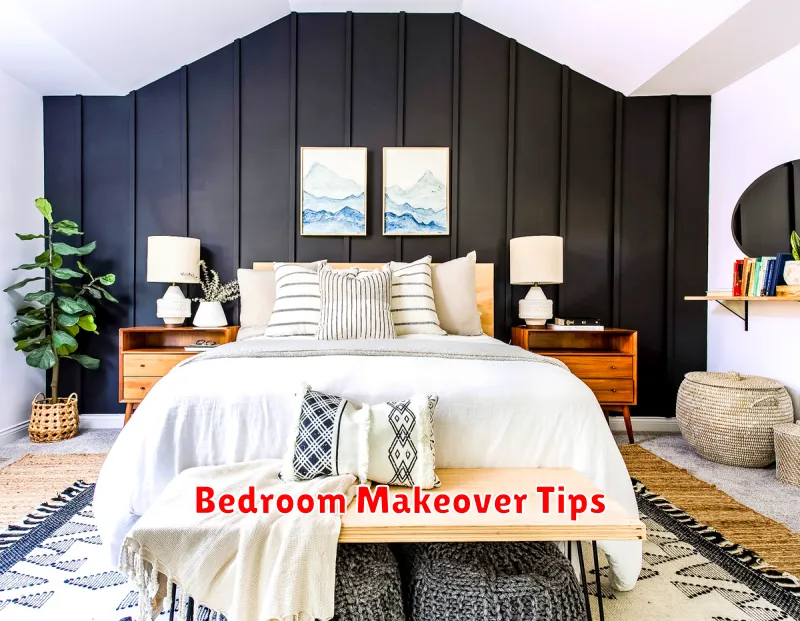Transforming a small bedroom into a haven of comfort and style doesn’t require a major renovation. This article presents 10 small bedroom makeover ideas, offering practical solutions to maximize space and create a relaxing atmosphere. Discover clever storage solutions, space-saving furniture choices, and impactful design strategies to achieve a maximum comfort level in your small bedroom. Learn how to optimize your space for ultimate relaxation and create a bedroom you’ll love.
Loft Beds for Extra Space

Loft beds offer a practical solution for maximizing space in smaller rooms, particularly bedrooms. By elevating the sleeping area, they create valuable floor space below, which can be utilized for a variety of purposes.
The additional space created beneath a loft bed can be easily transformed into a functional study area, complete with a desk and shelving. This allows for a dedicated workspace without sacrificing valuable floor space. Alternatively, it can be used as a comfortable seating area, with a sofa or armchair, providing a relaxed space for reading or socializing.
For children’s rooms, the space under a loft bed can become a play area, complete with toys and games. This helps to keep their playthings organized and contained, while ensuring a safe and designated area for play. It can even serve as a dedicated storage area, with the addition of drawers, shelves, or even built-in wardrobes.
The versatility of loft beds extends beyond their space-saving capabilities. Design options are plentiful, offering a range of styles to suit various tastes and interior design schemes. From sleek, modern designs to more traditional styles, there’s a loft bed to complement any bedroom’s aesthetic.
Furthermore, considerations regarding safety are paramount when choosing a loft bed. Always ensure that it meets safety standards, featuring sturdy construction and appropriate guardrails to prevent falls. Proper assembly and regular maintenance are crucial to ensure the bed’s long-term safety and stability.
In conclusion, loft beds represent a smart investment for maximizing space and functionality in any room. Their adaptability and design flexibility cater to a wide range of needs and preferences, offering a practical solution for small spaces while enhancing the overall living environment.
Sliding Closet Doors
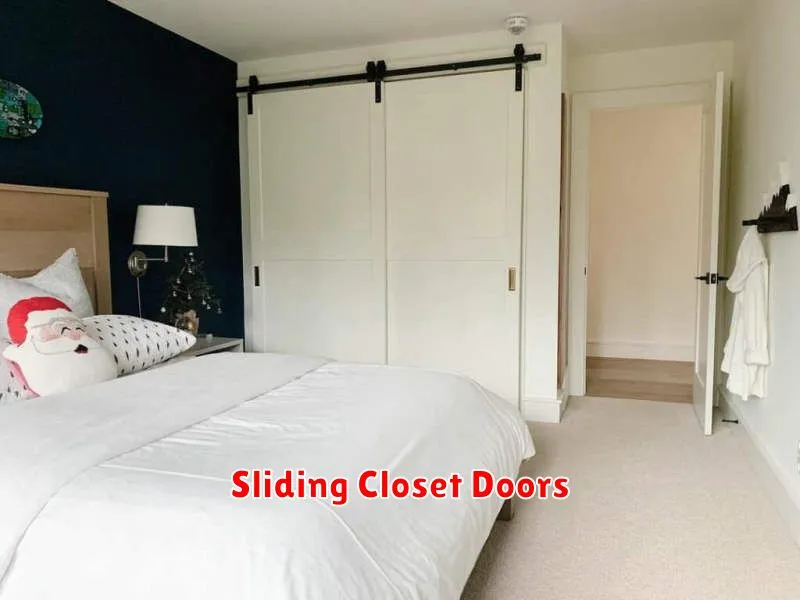
Sliding closet doors offer a space-saving alternative to traditional hinged doors, particularly beneficial in smaller rooms or areas with limited floor space. Their mechanism allows them to glide along a track, eliminating the need for outward swinging space.
One of the key advantages of sliding doors is their ability to maximize usable space. Unlike hinged doors which require clearance for opening and closing, sliding doors operate within their own frame, thus preserving valuable floor area. This makes them an ideal choice for walk-in closets, bedrooms, or any space where maximizing space is paramount.
Aesthetically, sliding doors provide design flexibility. They can be customized with various materials, finishes, and styles to complement any interior design scheme. From sleek, modern designs to more traditional, ornate styles, the options are virtually limitless, allowing for seamless integration with existing décor.
However, there are some potential drawbacks to consider. Sliding doors typically require more precise installation than hinged doors, and the track mechanism itself can sometimes be prone to issues if not properly maintained. Furthermore, while they save floor space, they may not offer the same level of ventilation as hinged doors, which can lead to potential moisture issues in some cases. Finally, the cost of sliding doors can sometimes be higher than hinged doors, depending on the materials and complexity of design.
Ultimately, the decision of whether to install sliding closet doors depends on individual needs and preferences. A careful consideration of the advantages and disadvantages, in the context of the specific space and design goals, is crucial before making a final choice.
Mirrors to Reflect Light
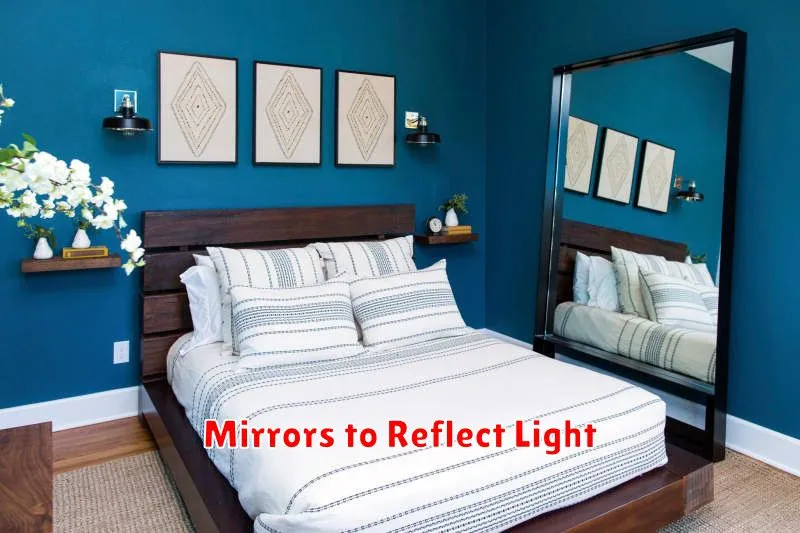
Mirrors are commonplace objects, yet their function in reflecting light is a fundamental concept in optics. Their ability to redirect light rays makes them crucial in a variety of applications, ranging from everyday personal use to complex scientific instruments.
The reflection of light from a mirror is governed by the law of reflection. This law states that the angle of incidence (the angle between the incoming light ray and the normal to the mirror’s surface) is equal to the angle of reflection (the angle between the reflected light ray and the normal). The normal is an imaginary line perpendicular to the mirror’s surface at the point of incidence.
Different types of mirrors exist, each with unique properties. Plane mirrors, the most common type, produce a virtual image that is upright, laterally inverted, and the same size as the object. Concave mirrors, which curve inwards, can produce both real and virtual images, depending on the object’s distance from the mirror. They are used in applications such as telescopes and reflecting headlights due to their ability to converge light.
Conversely, convex mirrors, which curve outwards, always produce virtual, upright, and diminished images. Their wide field of view makes them ideal for security mirrors and car side mirrors, allowing for a broader perspective.
The reflectivity of a mirror is a measure of its ability to reflect light. Highly reflective mirrors, such as those used in laser systems, are crucial for minimizing light loss and maximizing efficiency. The material used to coat the mirror significantly impacts its reflectivity.
Understanding the principles of light reflection from mirrors is essential in diverse fields, including astronomy, medicine (e.g., endoscopes), and telecommunications (e.g., optical fibers). The design and application of mirrors are constantly evolving, leading to innovations in various technologies.
Multi-Functional Furniture
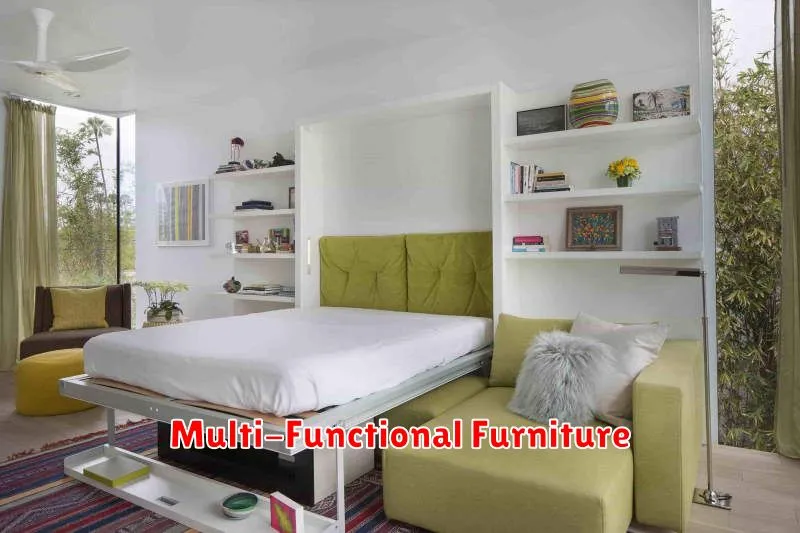
In today’s increasingly compact living spaces, multi-functional furniture has emerged as a crucial element in maximizing space and enhancing overall efficiency. This type of furniture cleverly combines the functions of two or more pieces, offering a practical and stylish solution for modern homes and apartments.
The benefits extend beyond simple space-saving. Multi-functional furniture contributes to a cleaner, less cluttered aesthetic. By consolidating items, it helps minimize visual distractions and creates a sense of calm and order. This is particularly valuable in smaller homes where a lack of space can easily lead to feelings of overwhelm.
A wide variety of multi-functional furniture options are available on the market. Popular choices include sofa beds, which transform from seating into sleeping arrangements; ottomans with integrated storage; and desks that fold away neatly when not in use. These pieces cater to various needs and lifestyles, accommodating different preferences and space constraints.
Beyond the practical advantages, multi-functional furniture often boasts a stylish design. Manufacturers increasingly prioritize aesthetics, producing pieces that are not only functional but also visually appealing. This ensures that integrating such furniture does not compromise the overall design scheme of a room.
The investment in multi-functional furniture provides long-term value. While the initial cost may seem higher compared to individual pieces, the combined functionality and space-saving benefits ultimately justify the expense. Moreover, high-quality pieces are built to last, providing years of dependable service.
In conclusion, multi-functional furniture represents a smart and stylish solution for modern living. Its capacity to save space, enhance organization, and maintain a clean aesthetic makes it an invaluable asset for homes of all sizes. Choosing the right pieces carefully can significantly impact both the functionality and the visual appeal of any living space.
Built-In Wardrobes
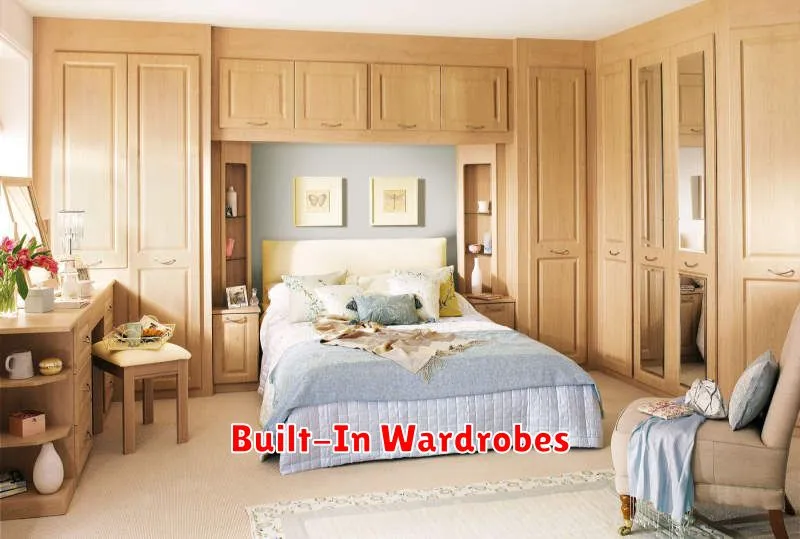
Built-in wardrobes offer a stylish and practical solution for maximizing storage space in any bedroom. Unlike freestanding wardrobes, they are custom-designed to fit seamlessly into your room’s architecture, creating a cohesive and elegant look.
One of the key advantages of built-in wardrobes is their space-saving design. They utilize every inch of available wall space, eliminating wasted corners and awkward gaps. This is particularly beneficial in smaller bedrooms where space is at a premium.
Customization is another significant benefit. Built-in wardrobes can be tailored to your specific needs and preferences. You can choose from a wide range of materials, finishes, and internal configurations to create a storage solution that perfectly matches your style and lifestyle. This includes options like drawers, shelves, hanging rails, and even specialized compartments for shoes or accessories.
The aesthetic appeal of built-in wardrobes is undeniable. They can significantly enhance the overall look and feel of a bedroom, adding a touch of sophistication and elegance. They can be designed to complement your existing décor or become a striking focal point in the room.
While the initial investment might be higher compared to a ready-made wardrobe, built-in wardrobes offer excellent long-term value. They are durable, long-lasting, and add significant value to your property.
In conclusion, built-in wardrobes represent a smart and stylish choice for anyone seeking to optimize their bedroom storage and enhance their home’s aesthetic appeal. The combination of space-saving design, customization options, and lasting value makes them a worthwhile investment.
Minimalist Bed Frames
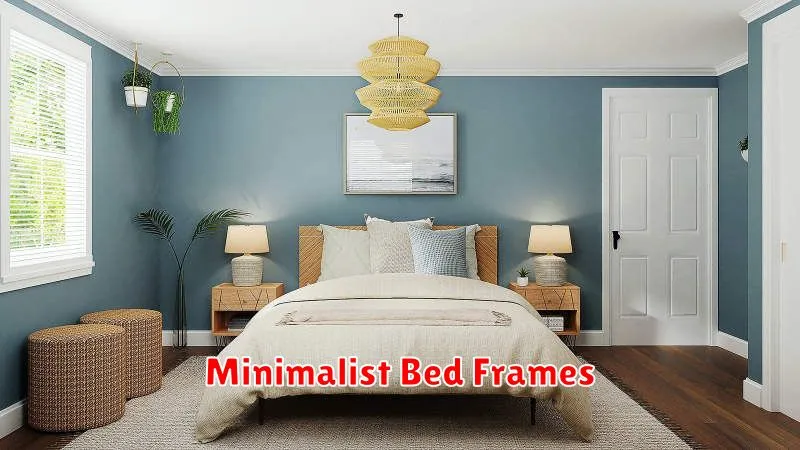
Minimalist bed frames are experiencing a surge in popularity, offering a clean, uncluttered aesthetic that complements a variety of interior design styles. Their simple designs focus on functionality and streamlined elegance, creating a calming and spacious feel in the bedroom.
One of the key advantages of a minimalist bed frame is its ability to enhance the overall design of the room. By minimizing visual distractions, the focus remains on other elements such as bedding, artwork, or lighting. This makes it perfect for smaller bedrooms where maximizing space is crucial.
The materials used in minimalist bed frames vary, ranging from sleek metal to natural wood. Metal frames often provide a modern, industrial feel, while wooden frames offer a warmer, more organic aesthetic. The choice depends on personal preference and existing décor.
Functionality is paramount in minimalist design. Many minimalist bed frames feature simple, easy-to-assemble designs. Some even incorporate built-in storage solutions, further enhancing their practicality.
Beyond the practical aspects, style remains a significant consideration. Minimalist bed frames are versatile and can easily adapt to different room styles, from Scandinavian minimalism to modern contemporary. Their understated elegance ensures they remain a timeless choice.
In conclusion, choosing a minimalist bed frame is an excellent way to create a serene and stylish bedroom. Its clean lines, functionality, and versatility make it a popular choice for those seeking a less cluttered and more peaceful sleep environment.
Under-Bed Storage Solutions
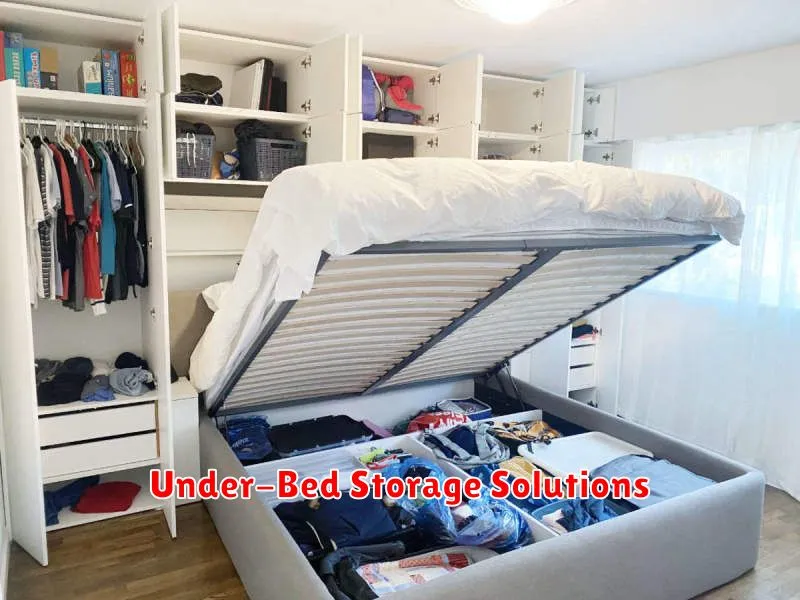
Maximize your space and minimize clutter with clever under-bed storage solutions. The area beneath your bed is often wasted, but with a little creativity, it can become a valuable storage asset.
Storage containers are a popular choice. Look for clear, plastic bins for easy identification of contents. Consider using labeled containers to stay organized and quickly locate items. Rolling containers are excellent for easy access, while flat, shallow bins are ideal for storing items like sweaters or linens.
For a more built-in look, consider under-bed drawers. These can be purchased pre-assembled or custom-built to fit your bed frame perfectly. This method offers excellent space optimization and a neat, organized appearance. Drawers typically provide more secure storage than bins.
Vacuum-sealed bags are a great option for bulky items like seasonal clothing or bedding. These bags significantly reduce the volume of stored items, maximizing the storage space available under your bed. Be sure to clearly label the contents of the sealed bags.
Remember to consider the weight capacity of your bed frame and flooring when choosing your storage solution. Avoid overloading the area, as this can damage your bed or floor. Properly utilizing under-bed space can contribute to a more organized and clutter-free bedroom.
Ultimately, the best under-bed storage solution depends on your individual needs and preferences. Assess the space you have available, the types of items you need to store, and your budget to find the perfect fit.
Floating Desks for Study Corners

Creating a dedicated study corner can significantly enhance productivity and focus. One increasingly popular design element is the floating desk. These desks offer a sleek, modern aesthetic while maximizing space in smaller rooms.
The beauty of a floating desk lies in its minimalist design. By eliminating bulky legs and frames, it creates a sense of openness and allows for a cleaner, more uncluttered workspace. This is particularly beneficial in small apartments or rooms where space is at a premium.
Beyond aesthetics, floating desks offer several practical advantages. They’re easy to clean underneath, preventing dust and debris buildup. This makes maintaining a hygienic study environment significantly easier. Furthermore, the clean lines and minimal design can help to create a more calm and focused atmosphere, ideal for studying.
However, there are also some considerations. Weight capacity is crucial; ensure the desk can support your equipment and materials. The installation process might require some DIY skills or professional assistance, depending on the desk’s design and your wall type. Finally, you’ll need to consider the available wall space and measure carefully to ensure a proper fit.
In conclusion, a floating desk can be a fantastic addition to any study corner. Its space-saving design, modern aesthetic, and ease of cleaning make it a worthwhile investment for those seeking to optimize their study environment. Careful planning and consideration of weight capacity and installation are key factors to ensure a successful implementation.
Wall Shelves for Added Storage
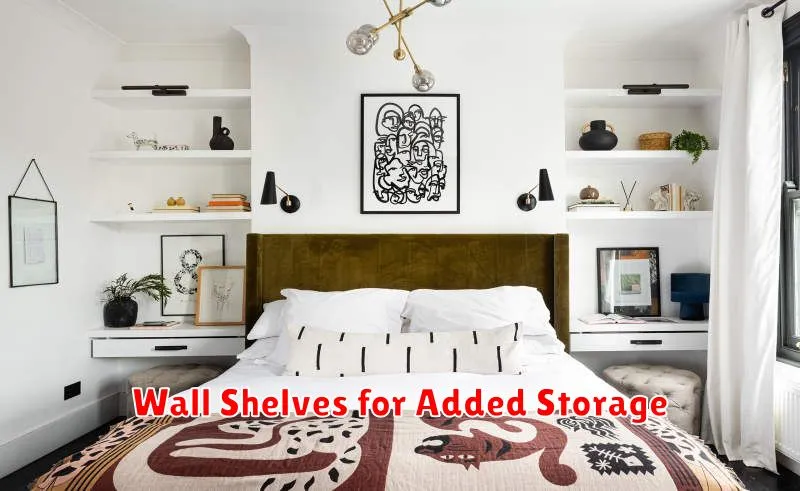
Adding wall shelves to your home offers a practical and stylish way to increase storage space. They are versatile and can be incorporated into almost any room, transforming otherwise unused wall space into valuable storage.
One of the biggest advantages of wall shelves is their space-saving capabilities. Unlike bulky cabinets or dressers, shelves take up minimal floor space, making them ideal for smaller homes or apartments. They’re particularly useful in areas where floor space is at a premium, such as hallways or bathrooms.
Customization is another key benefit. Wall shelves come in a wide array of styles, materials, and sizes, allowing you to perfectly match your existing décor. Whether you prefer rustic wood, sleek metal, or modern glass, you can find shelves to complement your personal aesthetic and enhance your home’s visual appeal.
Beyond aesthetics, functionality is paramount. Wall shelves can be used to display cherished items, store books, organize toiletries, or even create a dedicated workspace. Their adaptability makes them a truly versatile addition to any living space. Consider installing floating shelves for a minimalist look, or opt for more substantial shelves with brackets for heavier items.
Finally, installation is generally straightforward. Many wall shelves require minimal tools and can be installed quickly, making them a manageable DIY project for most homeowners. However, always ensure you select appropriate anchoring hardware for the weight capacity of your shelves and the type of wall material.
Hanging Pendant Lights
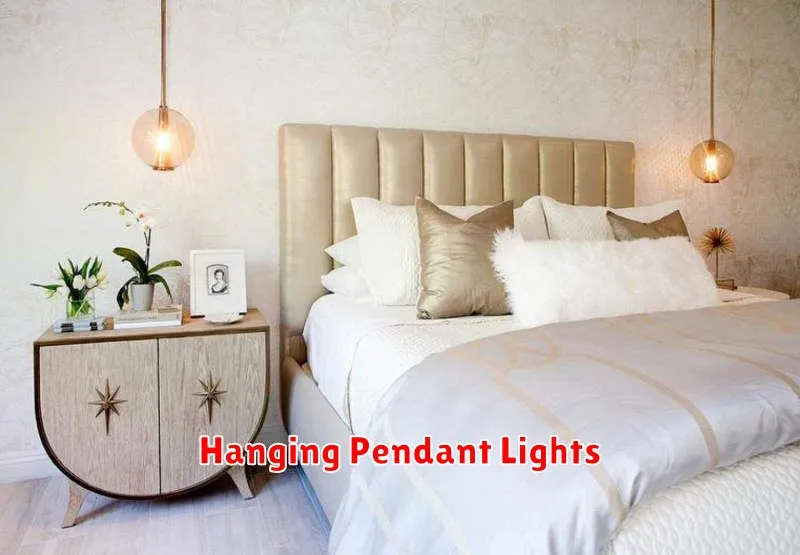
Pendant lights are a versatile and stylish lighting solution for any room in your home. They offer a blend of functionality and aesthetic appeal, adding a touch of elegance and sophistication to your interior design.
One of the key advantages of pendant lights is their adaptability. They come in a vast array of styles, sizes, and materials, allowing you to find the perfect match for your existing décor. Whether you prefer a modern minimalist design or a more traditional, ornate look, there’s a pendant light to suit your taste.
Installation is generally straightforward, although professional help may be recommended for more complex installations or higher ceilings. They are often easily integrated into existing electrical systems, providing a relatively simple upgrade to your home’s lighting.
Beyond their aesthetic appeal, pendant lights offer practical benefits. They provide focused illumination, making them ideal for task lighting in kitchens or dining areas. They can also be used to create ambient lighting, providing a warm and inviting atmosphere in living rooms or bedrooms.
The choice of material is another important consideration. From sleek metal finishes to warm wood accents and elegant glass shades, the material significantly impacts the overall look and feel of the light. Consider the existing style of your room to select a material that complements your décor.
Maintenance is typically minimal. Regular dusting is usually sufficient to keep your pendant lights looking their best. For more intricate designs, a gentle wipe-down with a soft cloth may be necessary.
In conclusion, hanging pendant lights represent a practical and stylish lighting solution capable of transforming the ambiance of any space. With their versatility and diverse design options, they offer a simple yet effective way to enhance the beauty and functionality of your home.

